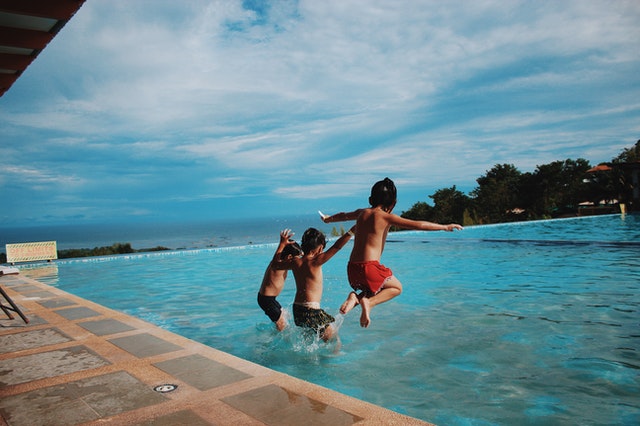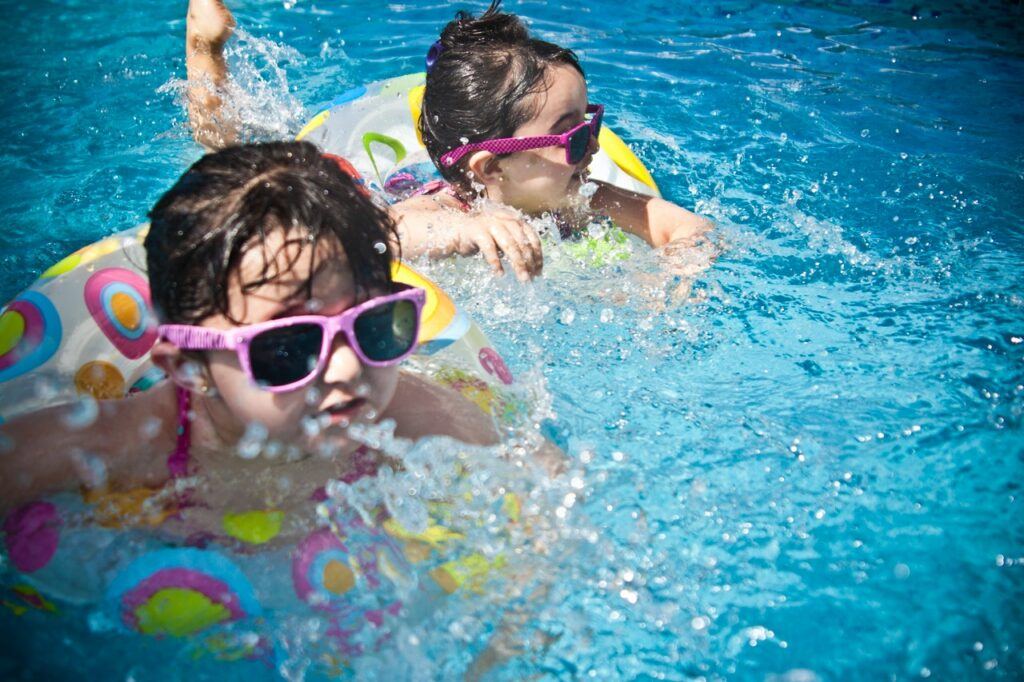How Can Kids Be Safe Around Water
Water safety doesn’t start and end at the swimming pool.
When we think of water safety, we think of hot tubs, pools, bathtubs, and also natural bodies of water. The earlier children are introduced to safety habits – the better!
Unfortunately, most accidents happen during “downtime” with indirect access to water or when access to water is unanticipated.
Drownings are preventable and it is a vision of ours to do our part in eliminating as many childhood drownings as possible.
Ways to practice water safety at your home are to install barriers, supervise swimmers at all times, and have children participate in swim lessons.
More on how to keep kids and parent’s water safe and competent below…
What Is Water Safety
Water safety is always taking precautions.
Water safety is being equipped with the know-how to be able to react in a water-related crisis to prevent drownings.
Water safety is making sure children have been provided with basic swim skills and classes that include real-life scenarios along with water safety awareness.

Why is it important?
Accidents can happen anywhere. A child knowing how to respond in a threatening situation can make all the difference and prevent loss of life.
Home Water Dangers
Swimming is a wonderful way to stay active, but always remember whether wading, playing, swimming, or relaxing water safety rules always have to be practiced.
Also, be vigilant when around other sources or objects containing water. Such as:
- Bathtubs
- Buckets and pails, especially 5-gallon buckets and diaper pails
- Ice chests with melted ice
- Toilets
- Hot tubs, spas, and whirlpools
- Irrigation ditches, postholes, and wells
- Fishponds and fountains
- Natural bodies of water
Children must be watched closely by an adult at all times when in or near water. An inch or two of water is all it takes for a child to drown. Stay within an arm’s length of your child.
Busy party planned for the summer? Hire a lifeguard and we’ll keep an eye on the party-goers around the water!
Here are a few preventative steps you can take around the home:
- Empty all buckets, pails, and bathtubs immediately after each use—do not leave them filled and unattended
- Keep young children out of the bathroom unless they are closely watched. Teach others in the home to keep the bathroom door closed. Install a hook-and-eye latch or doorknob cover on the outside of the door. Always close the toilet lid, and consider using a toilet lid latch
- Never leave a child alone in a bathtub or in the care of another child, even for a moment. Avoid using bath seats or rings. Your baby can slip out of them and be trapped underwater
- Use a rigid, lockable cover on a hot tub, spa, or whirlpool, or fence in all 4 sides as you would for a swimming pool.
- Throw away or tightly cover water or chemical mixtures after use
- Watch children closely when they are playing near wells, open postholes, or irrigation or drainage ditches. Fill in empty holes or have fences installed to protect your child
- Learn CPR and know how to get emergency help
How Can We Be Safe Around Water At Home
We created a list that covers this. Our 7 water safety tips include:
- Supervise children when in or near water
- Make sure kids learn to swim (even strong swimmers can benefit from swim instruction)
- Avoid drain entrapments
- Identify proper drain covers in pools and hot tubs before entering
- Install barriers or secure the perimeter of pools and hot tubs
- Know how to perform CPR
- Hire a lifeguard ( a trained, professional lifeguard can keep an eye on swimmers and perform proper aid and rescue if needed)
Interested in learning more about our top water safety tips?
Water Safe Kid Activities
We found an awesome list of safe and fun kid water activities and games that parents and kids alike can enjoy.
From water balloon games to math fun to DIY water contraptions, it’s definitely worth checking out and trying with family and friends as a way to have a blast and keep cool during the warmer months!
Key Takeaways – How Can Kids Be Safe Around Water
There’s no such thing as being too cautious when it comes to water and the safety of your children.
While drowning is preventable, accidents can and will happen.
Knowing how to respond in case of a crisis is why Peace Of Mind Swimming was formed.
This is why we teach real-life scenarios in our private 1:1 swim lessons.
It’s why we teach group CPR enabling parents, grandparents, siblings, and neighbors.
It’s also why we’re willing to take you up on your custom requests and send a trained lifeguard to your pool party or event at a date and time that best serves you and your guests with the goal of keeping everyone safe.
Learn more about our services here!
Let us know in the comments below. What are some of the ways you practice water safety in your home? Could you be doing more?
We’d love to hear from you!


